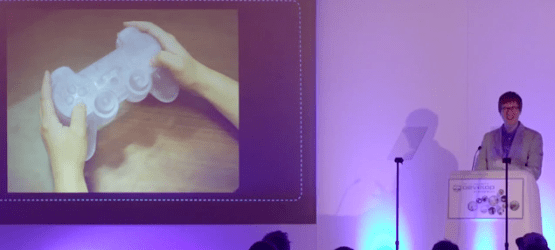At the Developer Conference in Brighton, Mark Cerny held a long keynote speech, with a vast majority of it covering topics he previously covered in his Barcelona talk. He did, however, throw in some new information, including when it came to Knack.
You can watch the video or below, or even further below that, we’ve typed out the most interesting parts if you’d prefer to read through it quickly:
One of the issues that I personally faced in 2008 when I became Lead System Architect was whether or not I should continue working directly on games. And I ended up having a heart to heart with Akira Sato, who was Chairman of Sony Computer Entertainment at the time.
His advice was that quite a lot of my value as architect was because of my game work. And to give up the game work would put me on a path that would reduce my long-term ability to contribute to the organization. So, if at all possible, he suggested that I should continue to work directly on games.
After Mark discussed how his role would change as he made these games, what he “ultimately decided was to be director on a smaller title,” which is now known as Knack:
What the Japan Studio and I chose to make was a character action game with two audiences in mind,” he said. “One audience was core gamers. I wanted to tap into the nostalgia for game experiences of the past, that feeling you had when you played Crash Bandicoot or Sonic the Hedgehog for the first time.
Crash was actually a brutally difficult game despite its very simple two-button control scheme. That meant on a hard difficulty setting our game really needed to challenge the core gamer.
The other audience was light or beginner gamers. And I chose this because I have some very specific and personal beliefs about consoles and their position within the world of gaming. Console games can be pretty complex. If we just focus on the controller and the game’s control scheme, there are something like 16 buttons on DualShock 3 or DualShock 4 that a game can use, and a typical AAA title will use almost all of them.
Now, I’m personally comfortable with that. I started gaming in the era of the Atari 2600, which only had one button. But then I had decades to adjust to the increasing complexity of games as they evolved to the point where they are today.
More recently, the children of the 1990s typically started by playing handheld game systems, with their simpler controls. And then moved to home consoles. In a sense handheld game systems were training them to be console players.
But today the trends are quite different. Young children are playing games on smartphones and tablets, as are many adults who have never played video games before. The ease of interactions with touchscreens is so high that pretty much anyone can play Fruit Ninja on an iPad.
So we have this gulf that’s developing for many light, young, or beginner players between what they’re familiar with when playing a game and what’s required to play a modern, AAA title.
Now, certainly the touchscreen games on Vita and motion-based gaming using the PlayStation Camera work to bridge this gap. But I started to think about creating a game that would firmly have a foot in both worlds. By that I mean a game that was very much a story-driven action adventure, but at the same time a game that could act as a sort of on-ramp to the world of console gaming, something that on the easy difficulty setting would be playable by pretty much anyone regardless of their gaming history or habits.
So, that is the origin of Knack. A game where you can play it on hard for that old school core gamer challenge, but on easy, it can be someone’s first console game.
He then talked about how their testing showed that “8 year olds have difficulty of the controls schemes of many games,” due to the size of the controller, compared to the size of their hands. Because of this, they made a 50% larger controller to understand how it felt like being a child playing a game, realizing that “the shoulder buttons are simply out of reach for the typical 8 year old, but that all the face buttons could be used quite readily.”
Do you want more Cerny? Well, you shouldn’t have to wait too long.
[Via]








